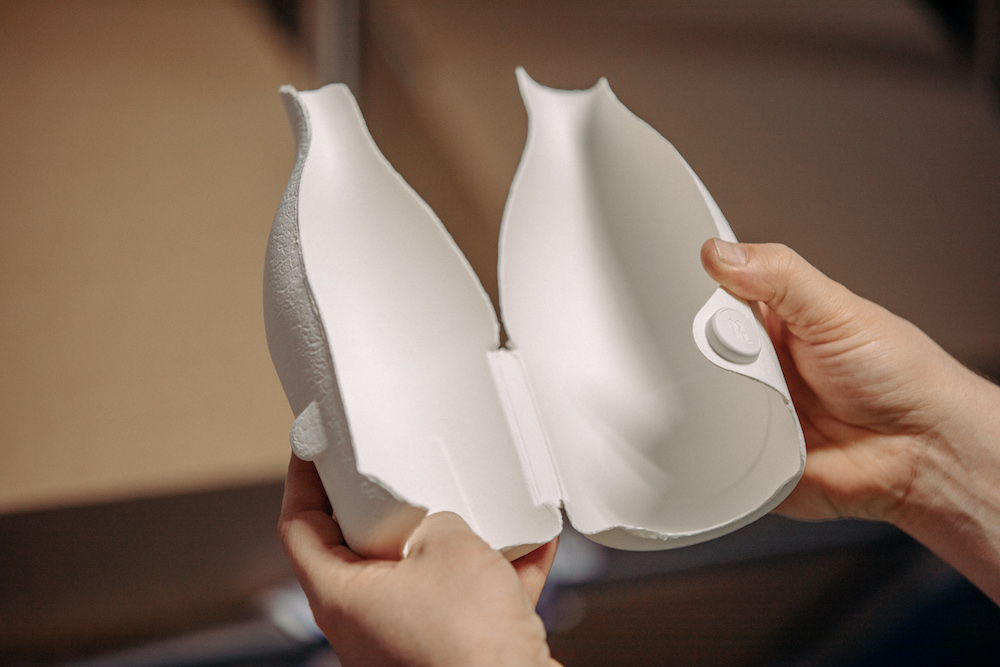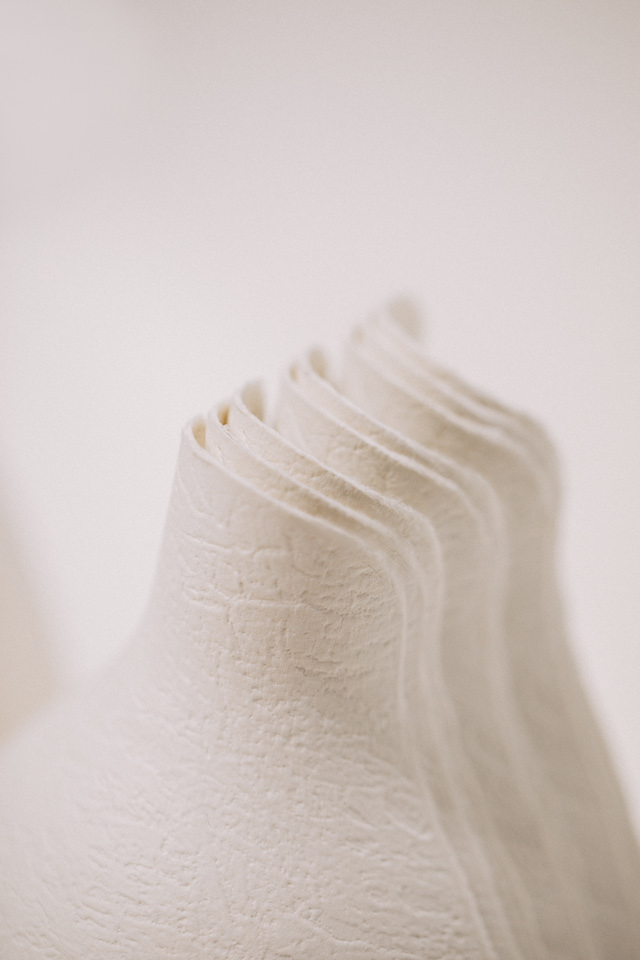Ruinart’s eco-packaging breaks new ground

It appears to be carved straight from the Crayères, Ruinart’s UNESCO World Heritage site chalk galleries. The result of seven prototypes and two years of research and development, the world’s first Champagne house has created a beautifully innovative paper skin concept for its bottles. Created using a precise, high-pressure water-jet cutting process from 100% natural wood fibres (sourced from sustainably managed forests), it is fully recyclable and marks a 60% reduction in carbon footprint compared to the previous generation of gift boxes. Furthermore, in a move to encourage the wider industry to follow suit, the designs are un-patented.
Port caught up with Ruinart president Frédéric Dufour to discuss the inspiration behind the packaging, environmental responsibility and the role of art and design in creating a more sustainable future.

What inspired the Second Skin?
As the first Champagne House, our attachment to preserving nature and savoir faire is deeply rooted. The Second Skin case is inspired by our desire to go as far as possible to lessen Ruinart’s environmental imprint, thus challenging finishings, aesthetic and uses.
What impact do you hope it will bring to your industry?
We hope to create a heightened consciousness towards sustainability across the industry by offering this disruptive eco-packaging solution. Maison Ruinart wishes to open up a dialogue with the wider public and help both industry behaviour and consumer behaviour evolve. We have intentionally released the second skin design un-patented, to encourage others to follow suit and create a more sustainable production line throughout the industry.
Why is sustainable practice integral to you?
Sustainability is no longer an option, it’s a necessity. On our part, that means as strong a commitment to protecting nature as to protecting culture, preserving our natural resources and craft techniques. Climate change is already happening in the vineyards. The Champagne terroir is the source of our wines’ excellence: we have a responsibility to protect and preserve this natural environment.

How was it created – from research and development to disruptive finish?
To create this unprecedented innovation in packaging, it took two years of dialogue between Ruinart and our manufacturing partners, Pusterla 1880 and James Cropper. Together, we focused our efforts on a material –namely cellulose fibers, or pulped paper – that solved two technological challenges. The first challenge was to render the case impermeable to any light that might risk altering the wine, especially with clear glass bottles. Paper alone wasn’t sufficient protection to filter out all the light waves. A new technique was developed to enrich the cellulose mix with a natural metallic oxide, which reinforced the opacity by adding a protective layer. The second challenge was to insure that the case could protect the wine right up until tasting, including contact with water, without deteriorating. Adapted to refrigerated conservation, the case even maintains its integrity for several hours when stored in a bucket of ice.
The development of the unique 100% paper closure took time and dedication to achieve a perfectly secure fit with aesthetic appeal. The James Cropper team developed and tested various closure mechanisms before the beautiful button closure that is integrated into the casing, was selected. The design needed to look very natural and non-repetitive in order to create the unique chalk texture on the Second Skin moulded paper. The perfecting of the chalk-like texture, with the richness, depth and finesse of the design detail, was a first. It represented a true technological feat, especially with the beautiful clean edges cut with a water jet directly on machine.
Altogether, it took seven prototypes to arrive at this pulped paper case, which embellishes the contours of the bottle while preserving Ruinart’s taste integrity.

What role does art and design have in creating a more sustainable future?
At Ruinart, in taking action for a sustainable future, we choose to collaborate with artists who are concerned with environmental issues. With climate change being an issue of our time we collaborate with those that have a more emphatically ecological, inventive, humanist and resilient approach. Over this past decade alone, the international artists selected to reinterpret the spirit of our Maison are committed to environmental causes: like Dutch Designer Piet Ein Eek, who created pieces by using wooden scraps, Chinese artist Liu Bolin who championed the savoir-faire of local workers, or English artist David Shrigley, whose gouaches highlight how much humans owe to nature. Even at our Maison in Reims, the art installation Retour aux sources, by the duo Mouawad Laurier, links innovation, creativity and sustainability, illustrating climate change in Champagne to viewers.
The Second Skin Case launched exclusively at Selfridges earlier this month as part of their Project Earth Initiative, a new commitment to ‘change the way we shop by 2025’.